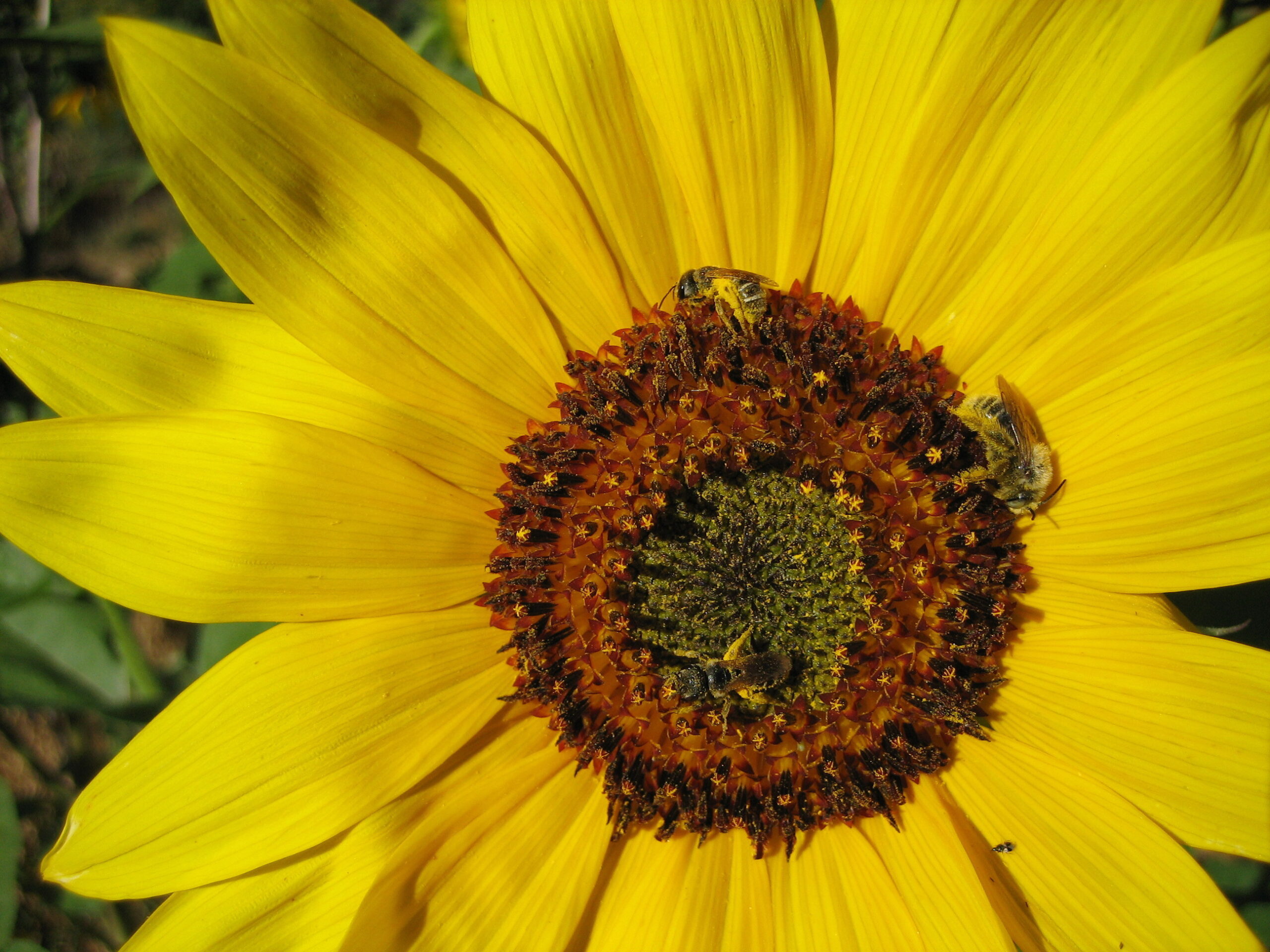Photo: Emily May
pollinator conservation

Bees transfer pollen between flowers, enabling the incredible diversity of plants on our planet to flower and fruit. Pollinators are keystone species in essentially every ecosystem on earth, enabling the reproduction of over 85% of all flowering plants and 67% of agricultural crops. In addition to the well known honey bee (Apis mellifera), a species brought to the United States from Europe, there are more than 20,000 described species of bees globally, and around 3,600 species of bees native to the United States.
These wild bees are generally quite different than the domesticated honey bee – most of them live solitary lives, with a single female doing all of the work to build a nest, collect pollen and nectar, and lay eggs. Unlike the honey bee, which lives aboveground and can be managed in wooden hives, more than 2 out of 3 wild bees live underground in nests that can be hard to spot from the surface! Some dig down and lay their eggs several feet below ground, while others make nests near the soil surface or in hollowed out plant stems above ground. While bees are the most important pollinator, butterflies, moths, beetles, flies, wasps, and hummingbirds also contribute to pollination.
Research has shown significant declines in native pollinator population sizes and ranges globally. Up to 40% of pollinator species on earth are at risk of extinction in the coming years as a result of a variety of environmental stressors including habitat loss, exposure to pesticides, diseases and pathogens, and climate change.








